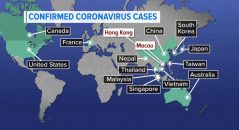 More and more people have been choosing to either reduce their gluten intake or to live a gluten-free life. In some cases, this can result in improved digestion, nutrient absorption and overall health. However, people choosing to avoid gluten also are at risk for nutrient deficiencies.
More and more people have been choosing to either reduce their gluten intake or to live a gluten-free life. In some cases, this can result in improved digestion, nutrient absorption and overall health. However, people choosing to avoid gluten also are at risk for nutrient deficiencies.
For some, avoiding foods that contain gluten isn’t a choice at all – it’s a necessity. These people have celiac disease, a condition that causes inflammation and possible damage to the small intestine, leading to the malabsorption of several nutrients and vitamins. According to celiaccentral.org, about 1% of the US population has been diagnosed with celiac disease.
More common is gluten sensitivity, usually reported as diarrhea or other types of gastrointestinal discomfort after eating gluten-containing foods. Regardless of the level of gluten sensitivity, everyone looking to live a gluten free lifestyle must be aware of their nutrient intake.
Typically, few gluten-free grain products are enriched with nutrients found in gluten-containing grains. Also, due to the potential intestinal inflammation and damage caused by gluten sensitivity or celiac disease, eating gluten free can result in several nutrient deficiencies. This shows how important it is for those following a gluten-free lifestyle to eat a diet packed with certain nutrients.
Nutrients You Need for Living Gluten Free
Sticking to a gluten-free diet can heal intestinal damage and avoid future damage at the same time. Because gluten-free products aren’t currently subjected to the same fortification standards as conventional foods, even the most healthy gluten-free diets can result in low levels of calcium, iron, folate, magnesium, thiamin, riboflavin, niacin, phosphorus, fiber, and fat-soluble vitamins.
Calcium and vitamin D are important for healthy bone mineralization and the prevention of osteopenia or osteoporosis in celiac disease patients. Loading up on leafy green vegetables like spinach, collard greens, and kale as well as quinoa and brown rice will help boost calcium (and many others!). Fish such as salmon, nuts, olive oil, avocados and fortified eggs will help with vitamin D.
Folate is particularly important for women of childbearing age and can be found in many foods such as green leafy vegetables like spinach, enriched rice, and in certain kinds of beans and lentils.
Getting enough fiber can be difficult on a gluten-free diet as well. Enjoying plenty of apples, broccoli, chickpeas and nearly all vegetables can ensure your fiber levels are high.
The Top Four Ways to Avoid Nutrient Deficiency
The nutrients in foods can vary a great deal. Here are some tips for making sure you’re getting the most out of your food:
1. When shopping, opt for fresh or frozen fruits and vegetables. Fresh and frozen produce contain more nutrients than canned items. Fresh fruits and vegetables are the best choice if the item is in season and locally available, however frozen items are better when you want a food that is out of season.
2. Cook your vegetables lightly! Nutrients are lost when a food is fried or boiled in water for too long. Lightly sauté, steam, or bake vegetables rather than frying them or boiling them in water. A slight “crunch” is usually better than “soggy” anyway.
3. Eat as many “whole” foods as you can. Whole, unprocessed foods have nutrients that processed foods no longer contain. Typically, the outer perimeter of the supermarket is the best place to shop for groceries since this is where most whole foods are found.
4. Eat colorfully! Select more foods that are naturally bright in color. Often, each color represents a different nutrient. For example, while red tomatoes and pink watermelon contain the nutrient lycopene, orange sweet potatoes and pumpkin have the nutrient beta-carotene. For a tasty, nutrient-dense meal, include several different colors of fruits and vegetables.





